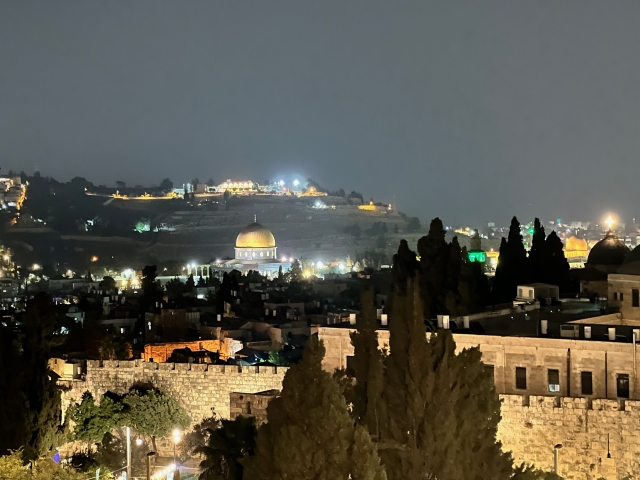The recent Rosh Hashanah episode at the Temple Mount has reignited longstanding tensions surrounding religious rites and territorial claims in the region. For the third consecutive year, the sounding of the shofar—a traditional Jewish horn—near the Al-Aqsa Mosque plaza has elicited a firestorm of reactions from both Jewish and Arab communities. What unfolded subsequently has critical implications not only for the religious community but also for geopolitical dynamics.
On the eve of Rosh Hashanah, two distinct shofar blasts resonated near the Al-Aqsa Mosque; one in the mosque's central square and another close to the site where Jews believe the Messiah will enter the compound from, an area known to Jews as "Sha'ar Rachamim" the "Mercy Gate" or "Bab Al-Rahma" in Arabic - Christians refer to it as the Golden Gate, the site where Jesus entered the Temple Compound from the Mountof Olives. This year, the duration of the shofar blowing was long enough for the Al-Aqsa guards to identify the individual responsible using surveillance technology. Israeli authorities promptly detained those involved, a move that further fueled animosities among local Arab populations and beyond due to images of Israeli police in the compound, despite the fact they were there to arrest the Jewish man responsible for the incitement.
The shofar's symbolic resonance cuts deep. For those critical of Israel, the act is considered an audacious declaration of Zionist sovereignty, thereby signaling an end to the Islamic heritage associated with Al-Aqsa and the initiation of a new Jewish chapter. Detractors perceive this as an alarming encroachment, with the ultimate aim of transforming the site into an exclusively Jewish temple.
Hundreds of Jews went up to the Temple Mount; Riots and clashes tking place at the Gaza border. Dozens of Palestinians arrived near the Gaza fence and began to confront the security forces, while burning tires. There were also reports in the Palestinian media about injuries from… pic.twitter.com/pUivQjTeAk
— Eli Dror (@edrormba) September 17, 2023
The controversy unleashed waves of unrest well beyond the Temple Mount. In proximity to the Gaza Strip fence, Palestinian protests erupted. Palestinian media chronicled numerous instances of discord and injuries, notably three journalists who suffered from tear gas exposure. Although an IDF spokesperson confirmed the use of explosives by protesters during the Jewish holiday, the Israeli forces remained unharmed, having been preemptively prepared for such disturbances.
In the media landscape, the Qatar-based Al-Jazeera network spearheaded a campaign framing the incident as a provocation against Muslim worshipers. Video footage was disseminated, showing clashes between security forces and Muslim devotees responding aggressively to the shofar's sounds. Reports also indicated that a number of young Muslim men were detained, and movement was restricted for Muslim workers and women—presumably to minimize the Muslim presence on the mountain during the Jewish holiday season.
Al-Jazeera further highlighted a rise in visitor numbers to the contested site, emphasizing that Israeli authorities had curtailed Muslim access from midday until evening. They framed this as the beginning of a 'season of aggression' that would likely persist through the Teshuvah days, Yom Kippur, and Sukkot.
Meanwhile, emboldened Palestinian rioters graffitied the holiest place in Judaism by painting a swastika as equivalent to a Star of David (below) in multiple locations. pic.twitter.com/JRorsanxq2
— Captain Allen (@CptAllenHistory) September 18, 2023
Even Saudi Arabia, which has been warming up to Israel lately, expressed unequivocal condemnation of the event. In an official statement, the Saudi Ministry of Foreign Affairs lambasted the "invasion of extremists to Al-Aqsa Mosque under the protection of Israeli occupation forces." The ministry held Israel accountable for the ramifications and urged international intervention to defuse tensions.
This complex incident at the Temple Mount raises pertinent questions about the balance between religious freedom and the preservation of order at a site sacred to multiple faiths. It also serves as a poignant reminder of how deeply religion is entwined with geopolitical realities in the Middle East, underlining the urgent need for a nuanced and inclusive dialogue to navigate these fraught waters.


